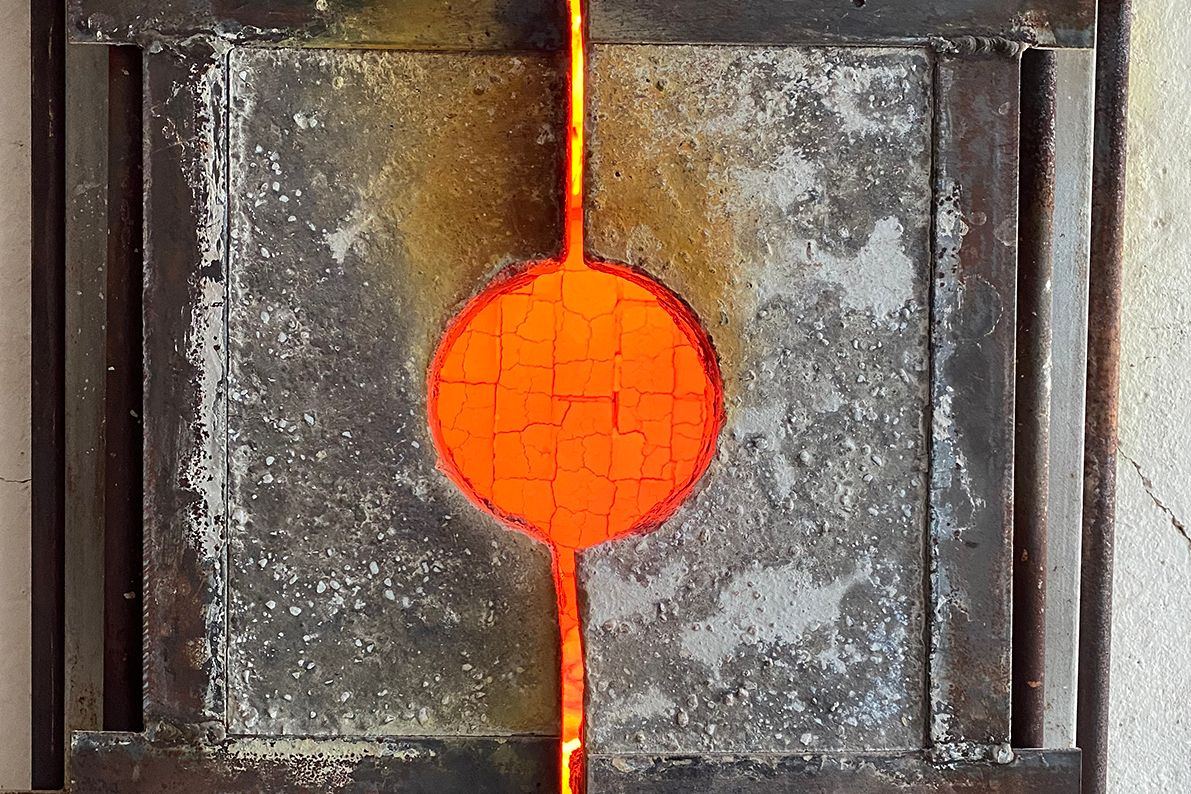Born and raised in China, Yuxi graduated with a BA degree in Ceramics Art & Design at China Academic of Art in 2019 and won the 2019 Outstanding Graduation Work Award. Before entering the RCA, she had been living and studying in China, focusing on embodying Eastern poetic aesthetics in ceramic works. She then entered the Ceramics and Glass programme at the RCA, with the intention of opening up a dialogue with different modes of artistic creation, alongside different cultural backgrounds.
Yuxi Lin


My work is based in the context of the COVID-19 pandemic and periods of self-isolation. When public affairs fell into chaos and disorder, I tried to rebuild my inner sense of order. I use the randomly ripped clays to overlap layer by layer. Working in a repetitive circular motion, I gained a sense of ritual like a practice of meditation, thereby rebuilding my inner sense of order. Just like Nietzsche's repetitive principle mentioned in the theory of eternal reincarnation of identity, I am also pursuing the love of life in such repetitive work. They are displayed in a series, like a pandemic diary of ceramics, recording the lockdown period from the artist's personal perspective.
My creativity has always been based on ceramic materials, exploring the materiality of the clay, and creating a sense of space with my works. In my works, the interaction between people and works is very important. The exquisitely sized works create a sense of depth and beauty of light and shadow in a large space. The viewer's line of sight is never limited to a fixed viewing angle, but follows the change of angle and light and shadow, maintaining a sense of curiosity to continuously explore.
![[untitled]](https://res.cloudinary.com/rca2020/image/upload/f_auto,h_1552,w_1548,c_fill,g_auto,q_auto/v1/rca2021/60c6654b101fec8c9f9cd3ba-834725?_a=AXAH4S10)
![[untitled]](https://res.cloudinary.com/rca2020/image/upload/f_auto,h_1280,w_1920,c_fill,g_auto,q_auto/v1/rca2021/60c6654b101fec8c9f9cd3ba-931779?_a=AXAH4S10)
![[untitled]](https://res.cloudinary.com/rca2020/image/upload/f_auto,h_1159,w_1920,c_fill,g_auto,q_auto/v1/rca2021/60c6654b101fec8c9f9cd3ba-742908?_a=AXAH4S10)
![[untitled]](https://res.cloudinary.com/rca2020/image/upload/f_auto,h_1280,w_1920,c_fill,g_auto,q_auto/v1/rca2021/60c6654b101fec8c9f9cd3ba-69071?_a=AXAH4S10)
![[untitled]](https://res.cloudinary.com/rca2020/image/upload/f_auto,h_1920,w_1920,c_fill,g_auto,q_auto/v1/rca2021/60c6654b101fec8c9f9cd3ba-369086?_a=AXAH4S10)
![[untitled]](https://res.cloudinary.com/rca2020/image/upload/f_auto,h_1920,w_1920,c_fill,g_auto,q_auto/v1/rca2021/60c6654b101fec8c9f9cd3ba-388258?_a=AXAH4S10)
![[untitled]](https://res.cloudinary.com/rca2020/image/upload/f_auto,h_1576,w_1920,c_fill,g_auto,q_auto/v1/rca2021/60c6654b101fec8c9f9cd3ba-348831?_a=AXAH4S10)
![[untitled]](https://res.cloudinary.com/rca2020/image/upload/f_auto,h_2560,w_1707,c_fill,g_auto,q_auto/v1/rca2021/60c6654b101fec8c9f9cd3ba-363957?_a=AXAH4S10)
![[untitled]](https://res.cloudinary.com/rca2020/image/upload/f_auto,h_1280,w_1920,c_fill,g_auto,q_auto/v1/rca2021/60c6654b101fec8c9f9cd3ba-851714?_a=AXAH4S10)
After the outbreak, I experienced a long-term isolation life. When a similar life was repeated every day, my perception of a specific time became chaotic. Instead, I was more sensitive to changes around me. Compared with the precise measurement method of the clock, the sunrises and sunsets are more intuitive and appropriate perception of time. I sat in front of the balcony and started the initial conception of my work. Their development and changes record the stages of the pandemic and echo my feelings of isolation at each moment. In the process of repetitive work, I followed the rhythm of the clock, rotating and stacking, entered a state of meditation.
Medium:
PorcelainSize:
7×7×3cm

This series of vessels challenged the traditional symmetrical shape, and there is no exact shape of the base. Different from people's usual way of viewing, it breaks the inherent impression of calm and fragility of ceramic works, and changes the usual way of displaying artworks, placing them in a "dangerous" but freer way.
As far as the exhibits are concerned, they are no longer limited to a fixed display state, but encourage people to participate, interact, and feel the interest in them. You can push it at will, and they will eventually return to the original balance angle, allowing viewers to explore their balance in the dynamic.
Medium:
PorcelainSize:
14×11×17cm





The Folding Time project is inspired by the book "Origami and Japanese Art of the 16th Century", which aims to explore the concept of combining origami art in ceramic works. Through the form of sculpture, it explores the relationship between internal and external space, as well as showing the different materiality of clay, expressing its lightness and movement of work.
